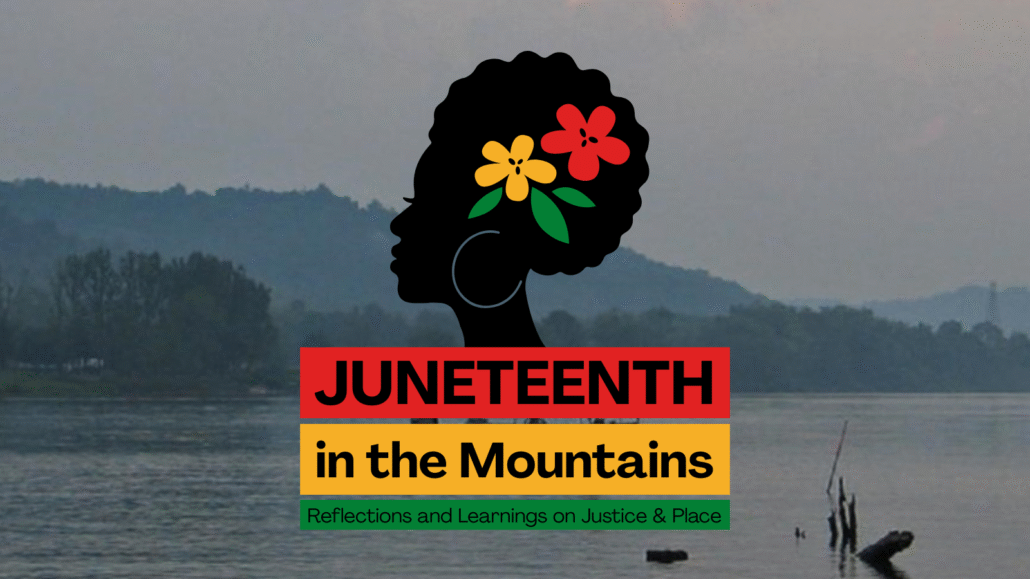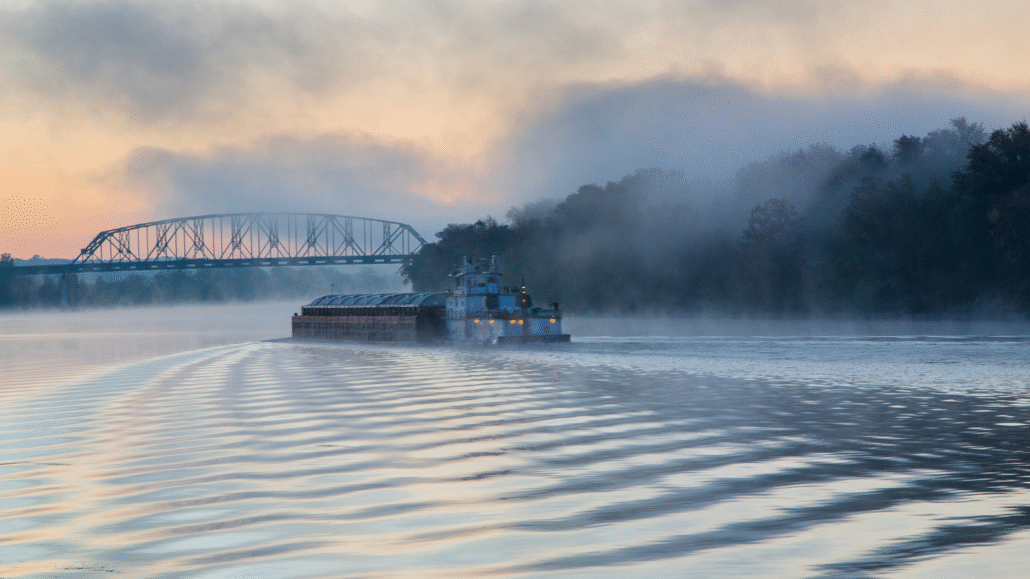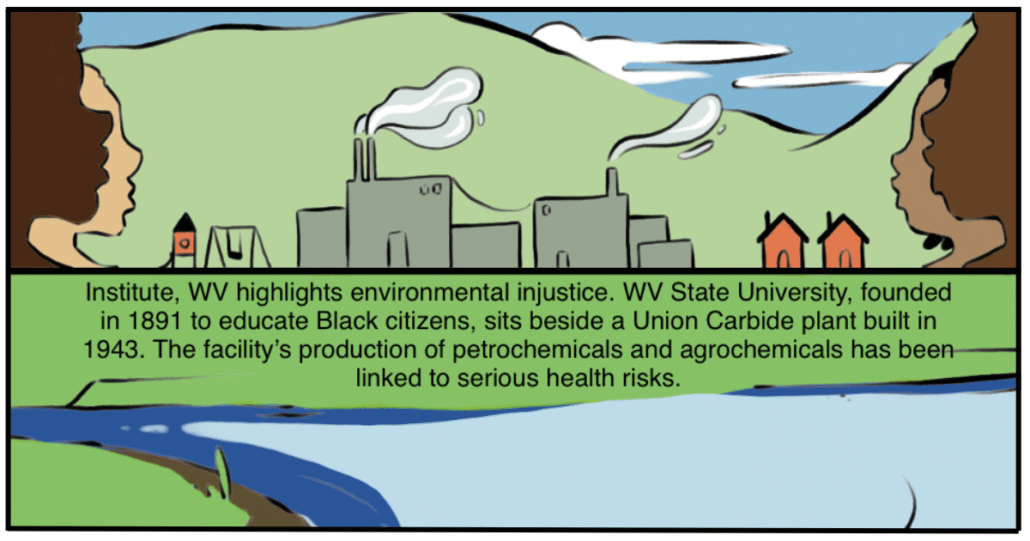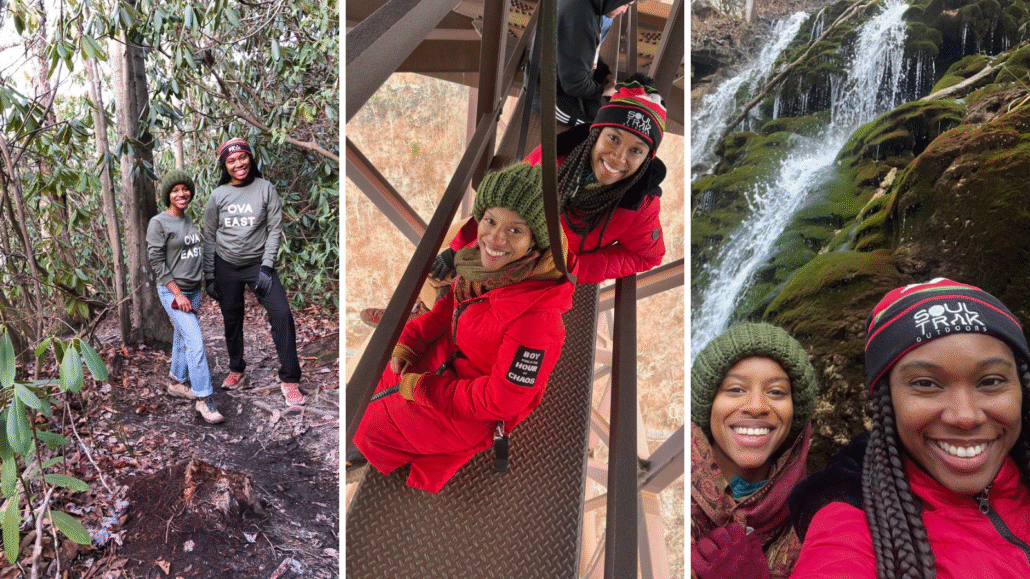Honor and Celebrate Juneteenth with WV Rivers
Ohio River Islands National Wildlife Refuge. Photo by the National Parks Service.
What’s Juneteenth? Juneteenth (celebrated each year on June 19) marks the day in 1865 when the last enslaved African Americans in Galveston, TX, learned they were free, more than two years after the Emancipation Proclamation.
It’s a day of liberation, reflection, and joy, and a reminder that our shared commitment to freedom and justice is ongoing.
At West Virginia Rivers Coalition, we believe that protecting our water and public lands means also protecting the stories, communities, and histories rooted in the Mountain State. This Juneteenth, we’re sharing just a few of the powerful lessons we’ve learned from Black Appalachian leaders, places, and histories that have shaped our state.
This week, we invite you to explore with us, not out of guilt, but out of respect, curiosity, and care.
We’re sending this a day early in case you’d like to plan a trip to WV public lands and historical sites, listen to a podcast, or maybe learn something new as your way of honoring and celebrating Juneteenth.
Remember, these stories are part of West Virginia’s story. They belong to all of us.
A River of Shared History
Reflection from Our Ohio River Coordinator, Charlise Robinson
A barge on the Ohio River. Photo by Kent Mason.
I grew up in the Mid-Ohio Valley, where the Ohio River has always been part of the landscape — steady, wide, and moving. I didn’t always know its deeper meaning. But as I’ve learned more about the history of this place and the people who lived here before me, I’ve come to see the river as more than water. This river is a symbol of freedom.
During America’s period of enslavement, people looked across the Ohio River to Ohio with hope. Crossing that river meant stepping onto free soil. It wasn’t just geography — it was a line between exploitation and liberation. That image sticks with me. Now, when I look at the Ohio River, I see the shared stories that connect us. These stories — some painful, some powerful — are part of what makes us stronger today.
After the Civil War, Emancipation Day celebrations began across the valley — West Virginia and Ohio in communities like Parkersburg, Belpre, and Marietta. Black communities would gather to mark the end of slavery, before “Juneteenth” was widely known here. It was a day of pride and remembrance, hosted by the local African American community.
That tradition carried on for years. Even now, I think about the meaning behind those gatherings: people choosing joy, choosing memory, choosing each other, much like the communities we support in our work at WV Rivers.
One place that holds these stories is Logan Memorial United Methodist Church in Parkersburg, which was placed on the National Register of Historic Places in 1982. This church was the first Black Methodist Episcopal parish in the area, and it has been through a lot. This church has survived floods, a barge explosion, and now it sits behind a flood wall that separates it from the Ohio River. But it’s still standing. It’s still here. That’s what resilience looks like.
To me, Juneteenth is a time to recognize the different stories that make up our collective past — stories of struggle, of resistance, of celebration. These stories remind us where we’ve been and help guide where we’re going. Our shared history is a source of strength.
Thanks for taking the time to read these stories and for holding space for the Black communities of Appalachia — then and now.
A Legacy of Education, Industry, and Environmental Injustice
A panel from our Environmental Justice Zine designed by WV artist Séamus Rionann.
Across West Virginia, low-income communities and communities of color face disproportionate environmental harm, from chemical pollution to unsafe drinking water and inadequate government response.
One of the clearest examples? Institute, West Virginia.
Institute is a community nestled along the Kanawha River near the WV State Capitol with a profound and complex history — a place shaped by both Black excellence and industrial burden.
At the heart of this community stands West Virginia State University (WVSU), one of the state’s two Historically Black Colleges and Universities. Founded in 1891 as the West Virginia Colored Institute, WVSU was part of the Second Morrill Act, which expanded land-grant institutions to serve Black students in the segregated South. For over a century, WVSU has provided affordable, high-quality education to generations of students, serving as a beacon of opportunity and leadership for Black Appalachians.
Yet this same community was later chosen as the site of the Union Carbide chemical plant, a decision with lasting consequences.
Originally built by the U.S. government during World War II in 1943 for synthetic rubber production, the Institute plant was sold to Union Carbide in 1947. Over the decades, the plant shifted toward producing specialty agricultural and industrial chemicals, including methyl isocyanate (MIC) — the same chemical involved in the 1984 Bhopal disaster in India, the world’s worst industrial disaster in history.
Though that gas leak happened thousands of miles away, it sparked deep fears in Institute, where MIC was also being produced. Tragically, those fears were not unfounded. In 2008, an explosion at the Institute facility, then owned by Bayer CropScience, killed two workers and led to renewed public outcry. Operations involving MIC were eventually scaled back, but the site, now operated as a multi-tenant industrial park by Union Carbide Corporation (a subsidiary of Dow Chemical), continues to raise serious concerns about pollution, toxic air releases, and public health risks. Here is a story from Mountain State Spotlight, featuring community members and advocates Pam Nixon and Kathy Ferguson.
Today, Institute is home to more people of color than in 98% of West Virginia (and 65% of the U.S.). The community lives daily with the cumulative impacts of pollution having:
- More hazardous waste facilities than 98% of WV (78% of the U.S.)
- More drinking water violations than 99% of WV (92% of the U.S.)
- More toxic air releases than 99% of WV (89% of the U.S.)
“Cumulative impacts” are the total effect of multiple sources of harm, like chemicals, noise, and lack of healthcare, on a community’s health and environment over time. Learn more about cumulative impacts.
For decades, residents of Institute have advocated for justice. The systems meant to protect them; however, are often underfunded, understaffed, and unresponsive, making it even harder for communities to be heard.
Our Public Lands Hold Our Stories
A worker emerges from the deadly Hawks Nest tunnel. Photo: New River Gorge National Park and Preserve.
West Virginia’s public lands aren’t just places for recreation — they’re places of memory. They hold the deep, often overlooked histories of Black West Virginians: one of resistance, creativity, labor, and community. As we advocate to protect these spaces today, we also work to preserve the stories they carry.
- Camp Washington-Carver: A Cultural Legacy Rooted in 4-H
Tucked into the mountains of Fayette County, Camp Washington-Carver began in 1942 as a segregated 4-H camp for Black youth — a rare and vital opportunity during the Jim Crow era. As part of 4-H, a national youth development program focused on “learning by doing,” the camp offered Black children and teens a place to learn about leadership, agriculture, science, health, and civic engagement in a time when access to such programs was often denied. It is named after Booker T. Washington and George Washington Carver.Today, this cherished site built by the Civilian Conservation Corps is West Virginia’s mountain cultural arts center, hosting thousands each year and continuing to honor Black heritage through music, storytelling, and tradition. Learn more about Camp Washington-Carver.
- Harpers Ferry: A Gateway to Freedom Harpers Ferry National Historical Park marks a pivotal moment in the nation’s path toward emancipation. In 1859, abolitionist John Brown led an armed raid on the federal arsenal here, hoping to spark a rebellion against slavery. Though the raid was unsuccessful, it electrified the nation — and helped push it toward civil war and, eventually, emancipation.
Visitors to Harpers Ferry can explore sites that invite reflection on the courageous, and often painful, struggle for freedom in West Virginia and beyond.– John Brown’s Fort, where Brown made his last stand
– The Kennedy Farm, where Brown and his followers planned the raid
– The Appalachian Trail and C&O Canal Towpath intersect in the park, and you can learn more about the history of Harpers Ferry along the trails. - Hawks Nest State Park: A Beautiful Place with a Tragic Past While Hawks Nest State Park offers stunning overlooks of the New River Gorge, it also holds one of the deadliest industrial tragedies in U.S. history. In the 1930s, hundreds of mostly Black men died building the Hawks Nest Tunnel, a hydroelectric project that exposed workers to deadly levels of silica dust with little to no protection.
It’s estimated that at least 764 workers died of silicosis, a preventable lung disease — many buried in unmarked graves. Their sacrifice, long ignored, is a sobering reminder of how Black labor built much of our modern infrastructure — and how environmental and workplace protections have often failed communities of color.
While you’re exploring Hawks Nest State Park or the New River Gorge National Park and Preserve, add some of the historic sites on the National Park Service’s African American Heritage Auto Tour.
These public spaces are not just scenic — they are sacred. They tell the stories of those who came before us and ensure that we remember them. As we work to expand and protect public lands in West Virginia, we are committed to preserving the cultural and historical truths they contain.
Protecting public lands means honoring the past.
Uplifting Black Voices
Photos of our friends Kristen Walker and Diamon Clark with Our Parks Too during their trip to the New River Gorge National Park and Preserve!
This Juneteenth, we’re honoring the powerful work of our partners who are preserving, amplifying, and advocating for Black communities across Appalachia. From storytelling to environmental justice, these organizations are leading with heart, history, and hope:
- Black in Appalachia – Highlights the history and contributions of African-Americans in the development of the Mountain South and its culture through documentaries, education, and community archiving
- Black By God (BBG) – Presents a detailed and varied portrayal of the diverse experiences of Black and BIPOC communities in the Appalachian region through community-led news and storytelling.
- Black Appalachian Coalition (BLAC): Amplifies Black Appalachian voices to challenge systemic inequities and promote community resilience and a thriving, sustainable future
- Empower Her Environmental Wellness, Inc – Educates and empowers women of color and underserved women in WV on how environmental impacts, like air and water quality, affect our physical and mental health
- WV Black Voter Impact Initiative – Embraces, educates, and empowers Black and marginalized community members to be civically engaged, inside and outside of the voting booth.
- Black Appalachia Young & Rising – Serves as the Black Youth caucus of the STAY Project, a network of young people, aged 14-30, who are committed to supporting one another to make Appalachia a place young people can and want to STAY.
- Our Parks Too – Uplifting Black voices and stories in nature through photojournalism — showcasing Black joy, memorializing historic contributions to public lands, and building a network to break down barriers to access, stewardship, and belonging in the outdoors
Keep Learning & Exploring
Want to keep exploring? Here are a few ways to deepen your understanding of Black history, labor, and environmental justice in Appalachia and beyond:
- Listen: Black In Appalachia Podcast
- Read: African American Workers and the Appalachian Coal Industry by Joe William Trotter Jr.
- Watch: The Accidental Environmentalist: Catherine Flowers
- Learn & Share: West Virginia Rivers Coalition’s Environmental Justice Zine
- Tell a Story: 25 Picture Books that Center Black Characters in Nature
- Attend a Juneteenth celebration in Beckley, Bluefield, Charleston, Fairmont, Huntington, Lewisburg, Martinsburg, Morgantown, or Wheeling.









